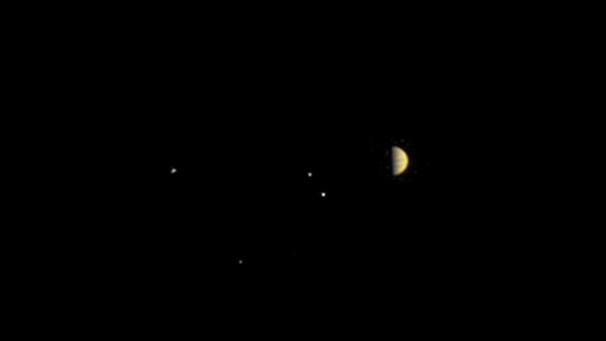Juno fired its main engine beginning at 11:18 p.m. EDT/0318 Tuesday GMT, slowing the spacecraft so it could be captured by the planet's gravity.
Launched from Florida nearly five years ago, Juno needed to be precisely positioned, ignite its main engine at exactly the right time and keep it firing for 35 minutes to become only the second spacecraft to orbit Jupiter.
If anything went even slightly awry, Juno would have sailed helplessly past Jupiter, unable to complete a US$1 billion mission.
Once in position to begin its 20-month science mission, Juno will fly in egg-shaped orbits, each one lasting 14 days, to peer through the planet's thick clouds, map its gargantuan magnetic field and probe through the crushing atmosphere for evidence of a dense inner core.
The probe also will hunt for water in Jupiter's thick atmosphere, a key yardstick for figuring out how far away from the sun the gas giant formed.
NASA expects Juno to be in position for its first close-up images of Jupiter on Aug. 27, the same day its science instruments are turned on for a test run.
The spacecraft, built by Lockheed Martin, is expected to last for 20 months. On its final orbit, Juno will dive into Jupiter's atmosphere, where it will be crushed and vaporised.
















